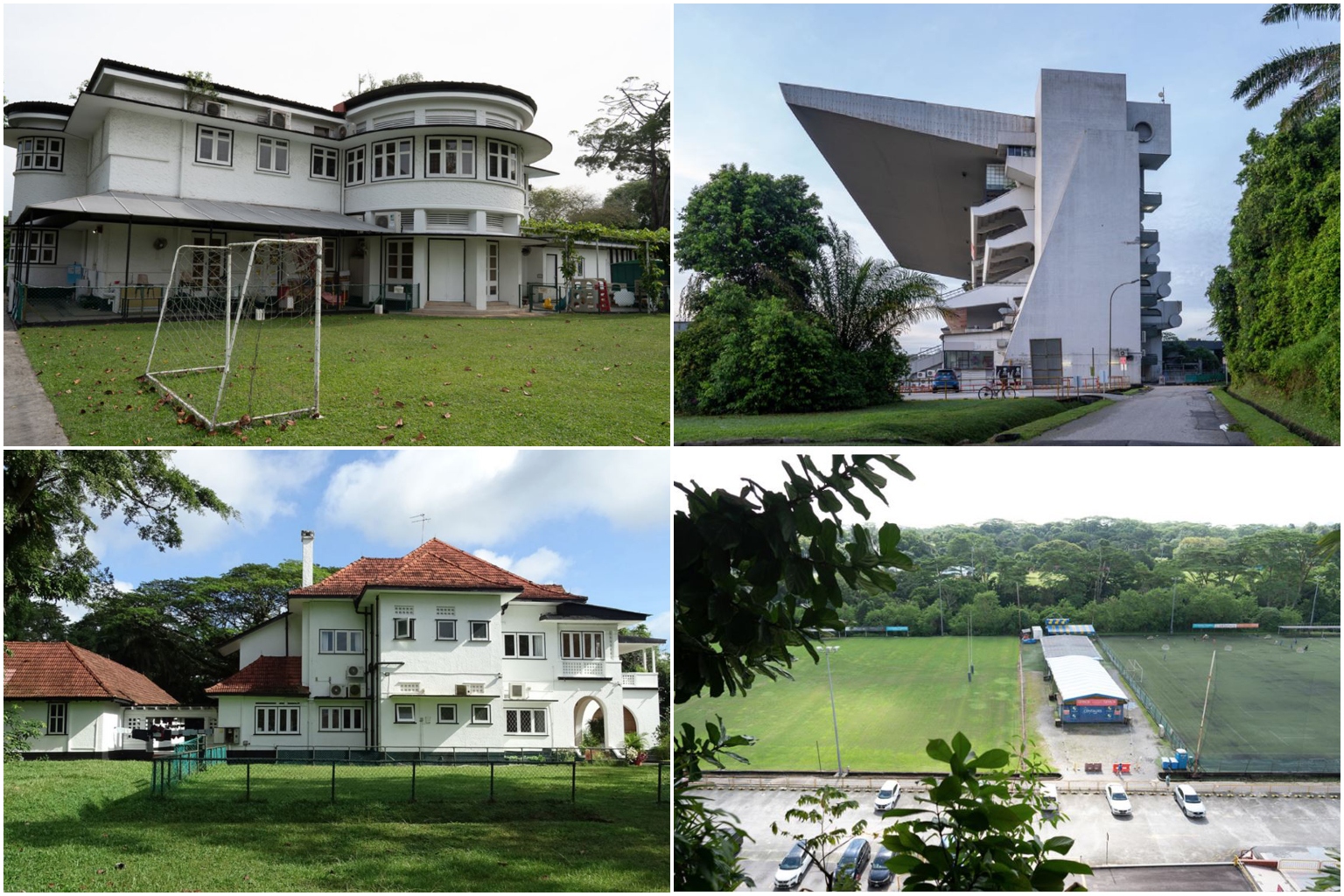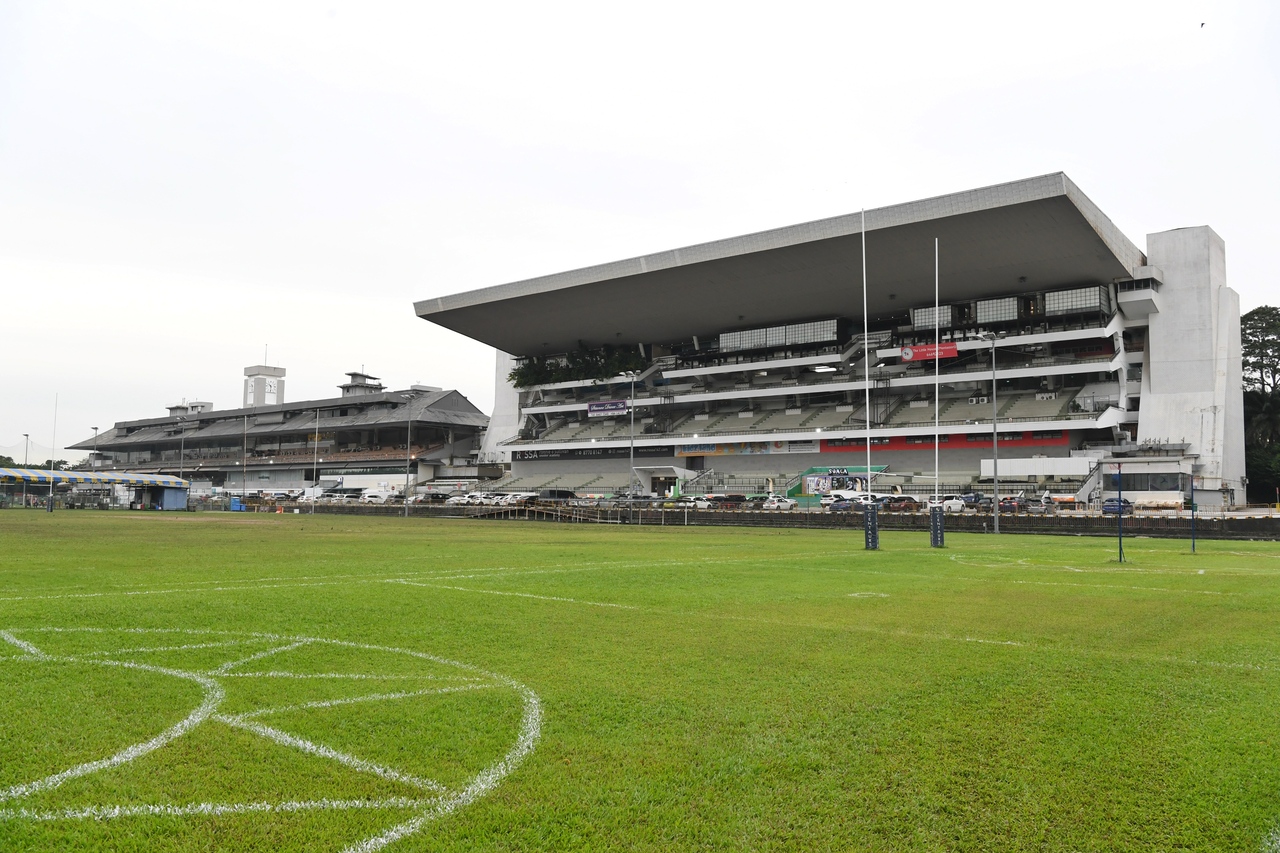MRT station will affect heritage of former Bukit Timah Turf Club but area's value can be retained: Report
Sign up now: Get ST's newsletters delivered to your inbox

The heritage impact assessment report concluded it is still possible to retain "sufficient heritage value" within the site.
PHOTOS: HERITAGE IMPACT ASSESSMENT STUDY FOR TURF CITY MRT STATION
Follow topic:
SINGAPORE - The construction of a Cross Island Line MRT station in the former Bukit Timah Turf Club will affect the site's heritage value, but keeping many of the buildings - including the two grandstands - will help retain the area's history.
A heritage impact assessment report released on Monday concluded that it is still possible to retain "sufficient heritage value" within the former racecourse site while building Turf City station, despite the "inevitable" need to destroy some structures in the process.
It recommended preserving several historic sites of high or exceptional importance, including the grandstands, former secretaries' bungalows, duplex flat and Saddle Club compound.
Parts of the racetrack, parts of the stables and hay barn, however, will be demolished.
The report, commissioned by the Land Transport Authority (LTA) and Urban Redevelopment Authority (URA), follows the announcement that Turf City station will be sited underneath the former Bukit Timah Turf Club horse racing tracks in September. It is one of six stations along CRL stage two, slated to open in 2032.
The news sparked concern among heritage watchers that extensive construction work would damage historic buildings of high heritage value.
For instance, the two grandstands were where the public used to watch and bet on horse races until 1999, with horse racing one of Singapore's earlier mass spectator sports, together with cricket.
The venue is also closely associated with Singapore Turf Club, formerly Singapore Sporting Club, which was formed in 1842 and which organised horse races twice a year.
As one of many racecourses founded by expatriates in South-east Asia, the site also speaks to the region's colonial legacy, and how these places were later reclaimed by locals from a wide variety of backgrounds.
The heritage assessment was conducted by National University of Singapore's Department of Architecture and heritage consultant Purcell, and focuses specifically on the areas immediately affected by and near to Turf City station works.
These works include tunnelling and open-cut excavations that will take place near preserved structures.
Contractors should come up with a protection plan for the buildings that are being kept, the report said, and set up temporary protective structures to minimise disturbance to these buildings. Any new infrastructure such as the station entrances should be mindful of heritage elements, it added.
"The proposed new entrance buildings should be of compatible design and still be distinguishable from the existing historic buildings, structures, and open spaces," it said, adding that the setting around buildings could also be retained as far as possible.
The report also highlighted the importance of proper documentation of areas where changes are made to the site, including via 3D scanning and drone surveys "as it stands as the last chance to record before the historic fabric is lost".
A separate heritage report on the full redevelopment of the former Bukit Timah Turf Club, which is earmarked for housing, will be published at a later date.
According to the Urban Redevelopment Authority's website, the heritage impact assessment report for Turf City station was completed first due to the urgency of starting MRT works to meet transport demand.

Among the Turf City tenants, Bukit Timah Saddle Club has already been asked to return an affected 0.8ha area from the first half of 2023, needed for a worksite to support tunnelling works for the CRL. Leases for other tenants expire on Dec 31, 2023.
International Council of Monuments and Sites Singapore president Yeo Kang Shua said he hoped planners of future residential and MRT developments can appreciate historical sites as a whole, instead of fragmenting elements into isolated parts.
While the demolition of some structures is understandable, "a spectrum of tangible heritage, from the more important structures like the grandstand and secretary's bungalows to supporting structures like stables will have to be kept to tell the site's complete history", Dr Yeo, who is assistant professor of architectural history at Singapore University of Technology and Design, said.

Heritage enthusiast and blogger Jerome Lim said the former turf club was designed as a large integrated development, including stables, quarters for management staff, jockeys and other supporting facilities.
In its heyday, its scale was unprecedented in Singapore's history and formed perhaps the single largest sporting complex. Its size resembled spaces in the English countryside, he said.
"It would really be a shame if intensification of use alters this drastically. We are in need of verdant open spaces," he said. "Hopefully, we are able to look beyond heritage structures and take into account their context in the space."
The other five stations in CRL stage two are King Albert Park, Clementi, Maju, West Coast and Jurong Lake District.
CRL stage two will benefit 40,000 households, the Transport Ministry has said, including areas like Sunset Way and West Coast Road currently not served by any MRT line.

